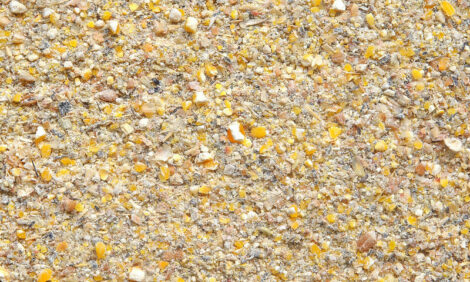



Melamine Has Negative Effects on Broiler Growth, Health
US - Dietary melamine was toxic to broilers chicks at concentrations 1.0 per cent or more, according to new research from the Univeristy of Missouri.A study was conducted to determine the toxicity of melamine in young broilers fed graded levels of melamine, according to a paper published this month in Poultry Science by L.M. Brand and colleagues at the University of Missouri. An additional objective was to determine melamine residual levels in selected tissues.
A total of 175 day-old male Ross broiler chicks were sorted to a randomised block design in stainless steel battery pens. Chicks were assigned to seven dietary treatments containing 0, 0.5, 1.0, 1.5, 2.0, 2.5 and 3.0 per cent melamine. Each dietary treatment was fed to five replicate pens of five chicks for 21 days.
Mortality increased quadratically with increasing dietary concentrations of melamine. However, compared with controls, mortality was only higher in birds fed 2.5 per cent or more of melamine.
Feed intake decreased linearly, whereas bodyweight gain decreased quadratically with increasing dietary concentrations of melamine. Compared with controls, both feed intake and bodyweight gain were lower only in birds fed 1.0 per cent or more of melamine.
Relative kidney weights increased linearly, whereas relative liver weights increased quadratically with increasing dietary concentrations of melamine.
Melamine residues in breast muscle and liver tissue increased linearly with increasing dietary concentrations of melamine, whereas melamine residues in kidney and bile increased quadratically with increasing dietary concentrations of melamine.
Compared with controls, melamine concentrations in liver and kidney were higher in birds fed all levels of melamine, whereas melamine concentrations in breast muscle and bile were only higher in birds fed 1.0 per cent or more of melamine.
Serum albumin, total protein, globulin and calcium increased quadratically in birds as dietary melamine increased, whereas serum aspartate transaminase and gamma gluatamyltransferase increased linearly with increasing levels of melamine in the diet. Renal histopathology revealed non-polarisable melamine crystals in the collecting tubules and ducts of birds fed 1.5 per cent or more of melamine.
In summary, Brand and co-authors concluded that dietary melamine was toxic to broilers at concentrations 1.0 per cent and more.
Reference
Brand L.M., R.A. Murarolli, R.E. Gelven, D.R. Ledoux, B.R. Landers, A.J. Bermudez, M. Lin and G.E. Rottinghaus. 2012. Effects of melamine in young broiler chicks. Poult. Sci., 91(8):2022-2029. doi: 10.3382/ps.2011-02044
Further ReadingYou can view the full report (fee payable) by clicking here. |








